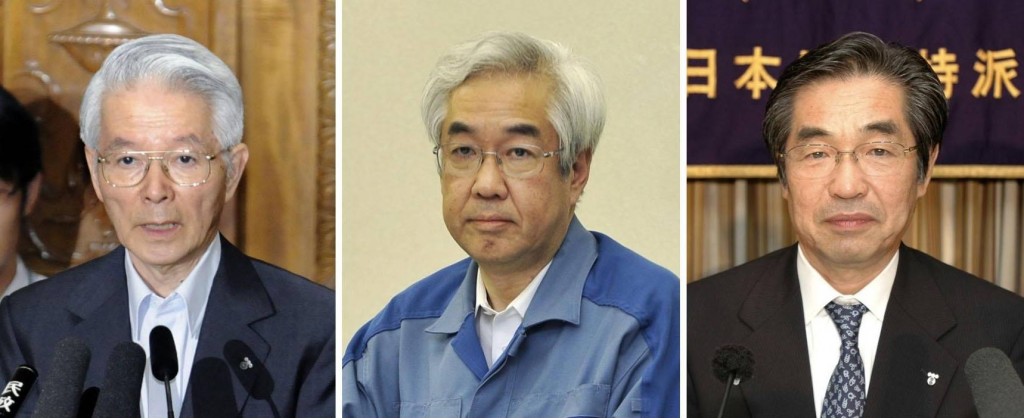BUSTED: Former TEPCO Bosses Indicted For Deadly Negligence in Fukushima Meltdowns

(EnviroNews World News) — Nearly five years after the tsunami and subsequent triple nuclear reactor meltdown that rocked Fukushima Daiichi in eastern Japan, for the first time, criminal charges have been filed, in what is still unfurling as arguably the worst manmade environmental disaster in history.
Three former bosses of the Tokyo Electric Power Company (TEPCO) were indicted on February 29, 2016, on charges of “professional negligence resulting in deaths and injury.” At this hour, the men have not been taken into custody.
Former Chairman of Tokyo Electric Power Company (TEPCO) Tsunehisa Katsumata, and two former Vice Presidents, Sakae Muto and Ichiro Takekuro will stand trial in the case in the Tokyo District Court and are expected to enter a plea of innocent.
The charges are rooted in several complaints, the main one being the deaths of 44 residents who expired in hospitals as a result of the calamitous evacuation — 13 more, including relief workers were also injured in the ensuing meltdown melee. Most of the 44 who perished were said to be very old or gravely ill. If convicted, the trio faces prison time of up to five years or a penalty up to one million yen (approximately $8,900).
The case does not target deaths or disease potentially caused by radioactive fallout. Baffling to many, official reports still record zero deaths as a result of radiation releases from the now-crippled mega-plant, even though hundreds of quadrillions of becquerels of radiation have been let loose into the environment so far — and the disaster continues to leach deadly isotope-riddled water into the Pacific to this day.
The indictment claims the three men were aware a tsunami of higher than 10 meters could strike the facility, submerge reactor buildings, cause a loss of power and result in an explosion, and that the men failed to act on that knowledge and implement safety measures.
Groups of prosecuting attorneys had twice explored charging the men in the past after 14,716 Fukushima residents filed a complaint in June of 2012. But the first two committees failed to return indictments citing a “lack of evidence,” and saying convictions would be hard to achieve. In a rare move in Japan, those rulings were appealed, and when the case was examined last July by a randomly-selected inquest panel of common citizens, the group voted for a mandatory indictment — and today, that order was carried out.
Angry members of the public have chastised a snuggle-buddy relationship between the Japanese government, regulatory agencies and the nuclear power companies, and say it was this cosy bond that previously prevented TEPCO bosses from being charged — but now it would seem, that previously impenetrable wall of defense surrounding the executives has come crashing down.
Several people on the inside track with the Fukushima disaster have expressed excitement about the impending trail, saying it presents the perfect forum for more of TEPCO’s tightly held secrets to be ordered into the light of day.
“The court proceedings that will now follow should reveal the true extent of TEPCO’s and the Japanese regulatory system’s enormous failure to protect the people of Japan,” said Hisayo Takada, Deputy Program Director with Greenpeace Japan.
“I’m full of emotion,” said activist Ruiko Muto. “This will be a great encouragement for hundreds of thousands of nuclear accident victims who are still suffering and facing hardship,” she continued.
The commencement of the trial is not expected for at least six months, as victims wait and wonder if they will now finally see someone held criminally liable for this disaster of apocalyptic scale.
MORE ON FUKUSHIMA FROM ENVIRONEWS
Radioactive Water Pileup Problem Still Festering at Fukushima: 1106 Tanks and Counting
(EnviroNews World News) – A new photo released this week starkly demonstrates how severe the radioactive water storage crisis on the ground at Fukushima Daiichi really is. Published in The Asahi Shimbun , the aerial photo shows a scene resembling that of a “giant integrated circuit board”…
FILM AND ARTICLE CREDITS
- Emerson Urry - Journalist, Author



